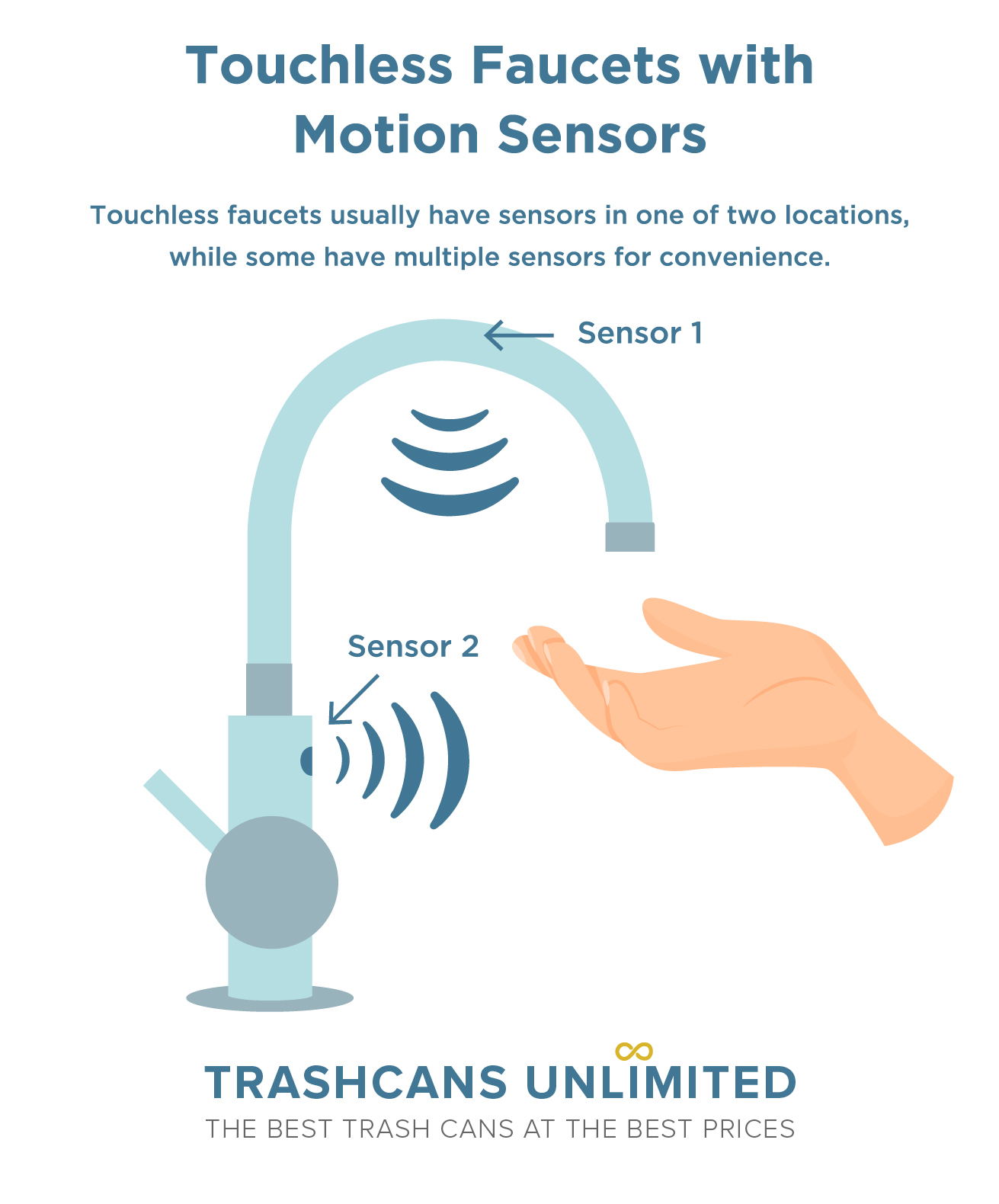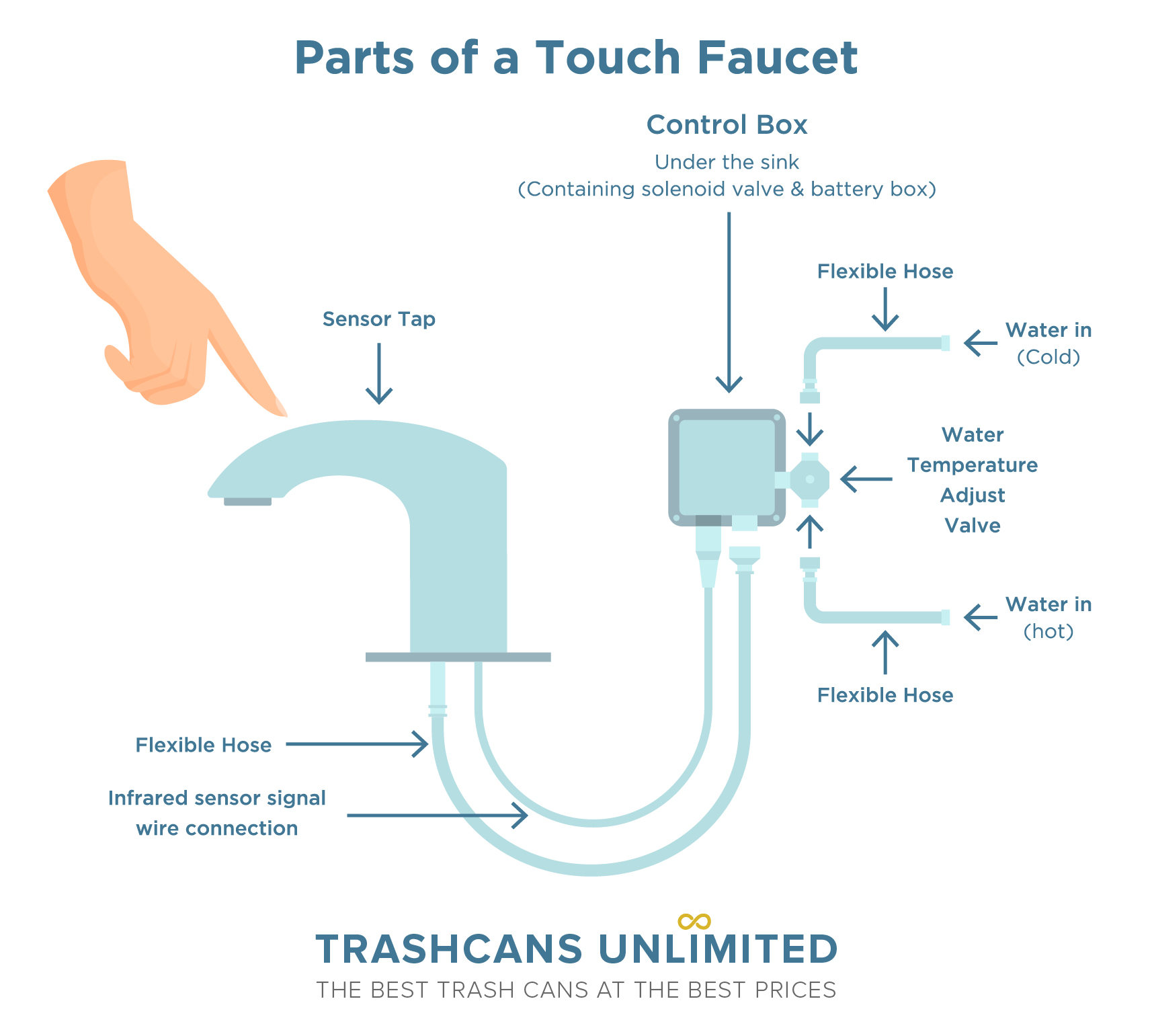Sinks are where people get their hands clean, but they’re one of the dirtiest, germiest places in a space. Many people are opting for the more modern and sanitary automated faucets in home and public bathrooms and kitchens. If you’re considering purchasing a sensor-operated faucet for your business or home, it’s worth considering the different types available, and what the benefits and downside of both might be. We’ll go over the pros and cons of both.
A new faucet can be a great upgrade to sanitation measures, and good trash cans are as equally important. Trash cans unlimited has an enormous stock of trash cans to meet any waste disposal needs.

Touchless Faucets
Generally speaking, touchless faucets use motion sensors to keep you from having to touch the faucet and potentially spread germs and other contaminants on the handles. Most are battery-operated, while some use an electrical outlet. They are easy to install, though it includes a few more steps to install and are more expensive than traditional faucets, the cost of installation and maintenance is often offset by the water savings.
The Pros of Touchless Faucets
- Saving water - Most touchless faucets come with timers that shut off the water automatically, which reduces water overuse as well as from keeping the water running accidentally.
- More sanitary- When you use a touchless faucet, you don’t have to turn off the faucet with now-cleaned hands. When you add one to a public bathroom, you’re reducing the total number of surfaces that people come into contact with, thereby reducing the risk of infection.
- Attractive appearance - Touchless faucets, in addition to being sanitary and water-saving, also have a sleek modern look that makes a bathroom look pretty futuristic! Having things that turn on and off with a hand-wave is pretty cool too.
The Cons of Touchless Faucets
- Sensor malfunctions - While the technology in touchless faucets is pretty solid, you can occasionally get malfunctions that cause the faucet to fail to activate, or it will activate randomly, requiring maintenance.
- Valve leaks - Another maintenance issue that can occur is a leaky valve, which will end up wasting water too.
- Temperature control - Many touchless faucets don’t have an option to control water temperature, dispensing either hot or cold water, which can be frustrating to some users. There’s nothing worse than going to warm cold hands with hot water, only to get frustrated by the lukewarm water coming from the faucet. The opposite is also true on hot days, and all you want to do is splash some cold water on your face, but you cant get that refreshment from the lukewarm water. However some of them have temperature controls underneath the sink, which can be adjusted for the time of year. Some have easily accessible handles or knobs that allow you to change the temperature, but that sort of defeats the purpose of having a touchless faucet.
- Battery replacement - An additional maintenance step where you have to replace the battery. Not a deal-breaker, but it definitely can be annoying.

Touch Faucets
Touch faucets are faucets that use a sensor that’s touch-activated in order for them to operate. Most use batteries, and are not difficult to install, and like touchless faucets, they can be more expensive than a traditional faucet, though you get benefits from these as well.
The Pros of Touch Faucets
- Easy to turn on - Many handles or knobs are hard to turn on or clean, especially when they have something gross on them or if your hands are slippery. Touch faucets alleviate this issue by being easy to turn on and off with the tap of a wrist, elbow, or finger, so you don’t have to touch it with dirty hands. So, while you still have to come into contact with the faucet, it is more sanitary.
- They save water - Touch faucets usually come with timers that shut off the water after a certain period of time elapses, preventing forgetful folks from leaving the water running.
- Attractive designs - Touch faucets usually have chic and modern designs. Since the sensor to activate touch faucets doesn’t require motion like touchless faucets, designs don’t have to compromise on form to allow for function.
The Cons of Touch Faucets
- Less sanitary - Touch faucets have it in the name— you have to touch them to activate the water. This is less sanitary than touchless faucets, but they are more convenient for messy or full hands, and do help to cut down on the risk of contamination.
- Lack temperature control - Unlike touchless faucets, touch faucets can provide more temperature control. Some have buttons or switches for hot and cold water, you don’t have the ability to control the temperature beyond those two settings, which can annoy some people. Some touch faucets have traditional knobs or handles to control the temperature, but that defeats the purpose of the touch activation.
- Battery replacement - Like touchless faucets, you’ll regularly need to replace the battery on a touchless faucet.
A More Sanitary Environment
If you’re looking to make your bathroom area more sanitary or easier to clean, you can start with better faucets. After that, finding the most sanitary trash cans is a useful next step, and we have those needs covered. Browse our product line or talk with one of our customer service representatives today!

